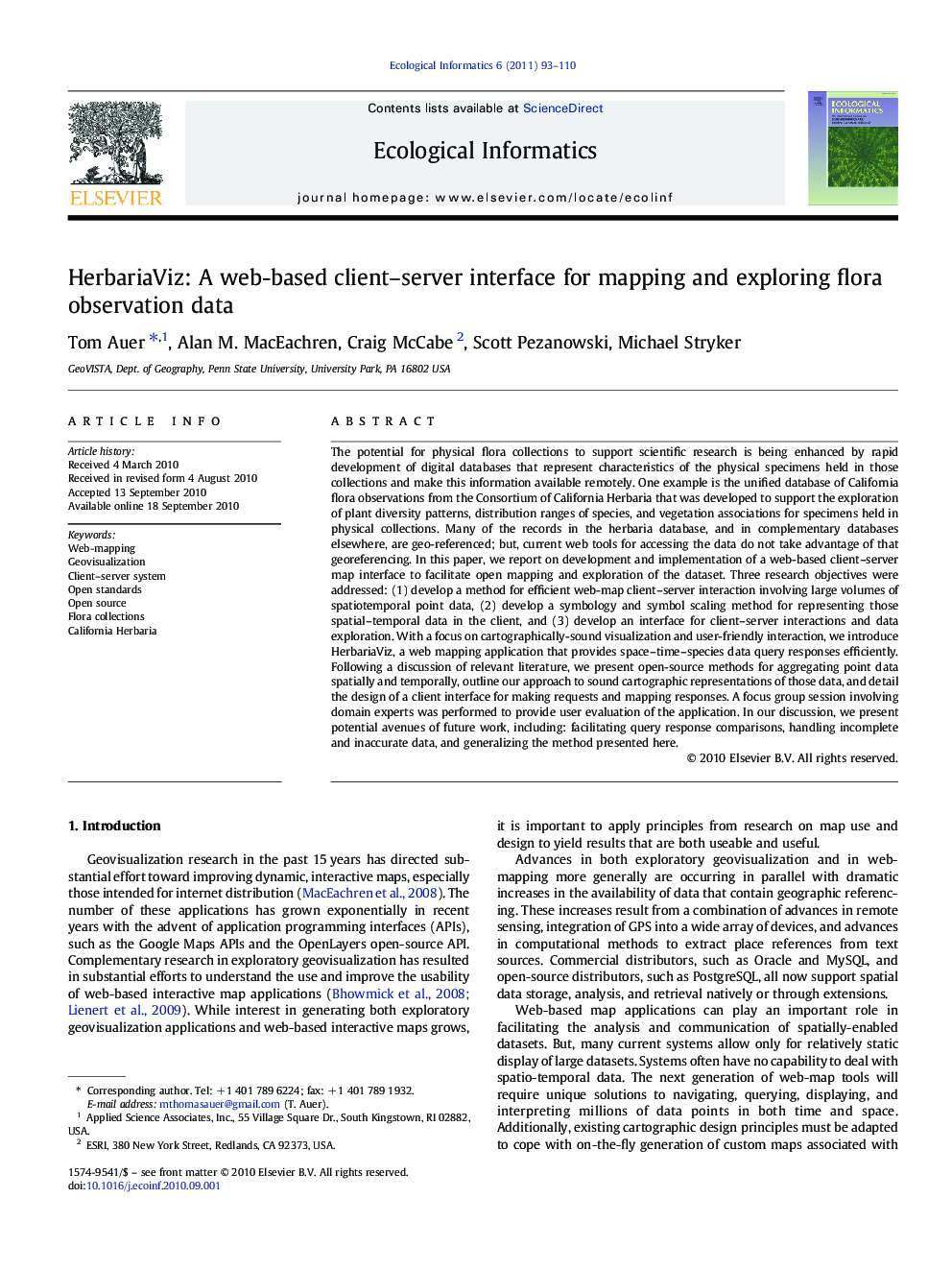| Article ID | Journal | Published Year | Pages | File Type |
|---|---|---|---|---|
| 4375168 | Ecological Informatics | 2011 | 18 Pages |
The potential for physical flora collections to support scientific research is being enhanced by rapid development of digital databases that represent characteristics of the physical specimens held in those collections and make this information available remotely. One example is the unified database of California flora observations from the Consortium of California Herbaria that was developed to support the exploration of plant diversity patterns, distribution ranges of species, and vegetation associations for specimens held in physical collections. Many of the records in the herbaria database, and in complementary databases elsewhere, are geo-referenced; but, current web tools for accessing the data do not take advantage of that georeferencing. In this paper, we report on development and implementation of a web-based client–server map interface to facilitate open mapping and exploration of the dataset. Three research objectives were addressed: (1) develop a method for efficient web-map client–server interaction involving large volumes of spatiotemporal point data, (2) develop a symbology and symbol scaling method for representing those spatial–temporal data in the client, and (3) develop an interface for client–server interactions and data exploration. With a focus on cartographically-sound visualization and user-friendly interaction, we introduce HerbariaViz, a web mapping application that provides space–time–species data query responses efficiently. Following a discussion of relevant literature, we present open-source methods for aggregating point data spatially and temporally, outline our approach to sound cartographic representations of those data, and detail the design of a client interface for making requests and mapping responses. A focus group session involving domain experts was performed to provide user evaluation of the application. In our discussion, we present potential avenues of future work, including: facilitating query response comparisons, handling incomplete and inaccurate data, and generalizing the method presented here.
